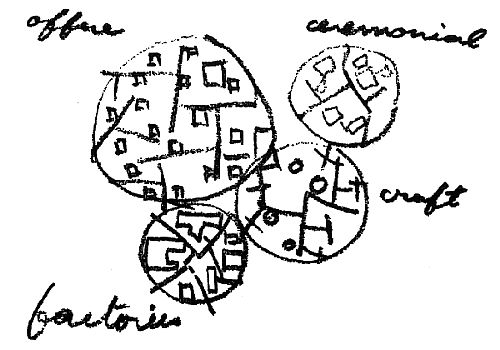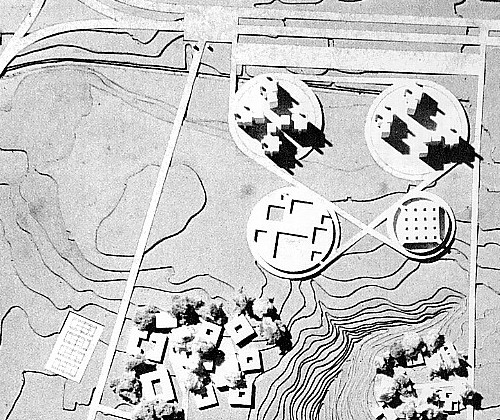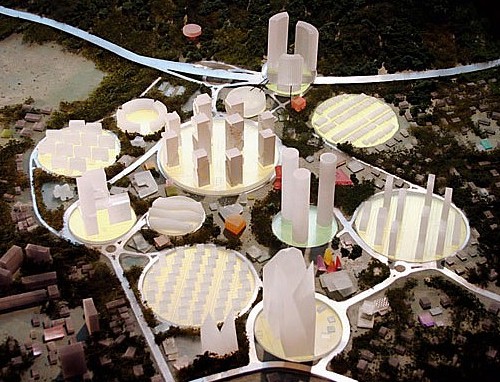...from the interview with Robert Venturi and Denise Scott Brown:
SR: Dr. Brownlee was talking about a couple of things he thinks of as being characteristic of the 'Philadelphia School.' One: big chimneys. The other: what he calls the 'Philadelphia corner.' The latter, I think he may have written about--how various architectural historical approaches 'solve the corner problem.' Is that ringing any bells for you?
RV: What does he mean by the corner? Big chimney--actually I think I may have possibly been influenced by Kahn to some extent, but I don't think he ever had a chimney like that. My beach house project, with its big high chimney--never built---horrified Vince Scully. But then also fascinated him at the same time.
DSB: You know, the diagonal was very much Philadelphia School.
RV: Yes. The diagonal. That's right, that diagonal. That, I got from Louis Kahn.
DSB: Well, I know where Lou Kahn got it. He got it from Team Ten. You know, in Europe, there was a lot of thinking about diagonals at that point. Lou had more influence from Team Ten earlier than has been generally recognized. I think I discovered how that happened, too. But that's another story. You know, the conference in Amsterdam in '59 he met Blag Valenca and Aldo Van Eyck. That's how Aldo Van Eyck eventually wound up coming to Penn. [The diagonal deterritorialized!?]
| |
2012.07.11 13:33
The Philadelphia School, deterritorialized

Alison Smithson, Patterns of association - Each district with a different function, 1953.
| |

Louis I. Kahn, Salk Institute for Biological Studies, first design phase, 1959-60.

OMA, Penang Tropical City, 2004.
Patterns of association, indeed.
|